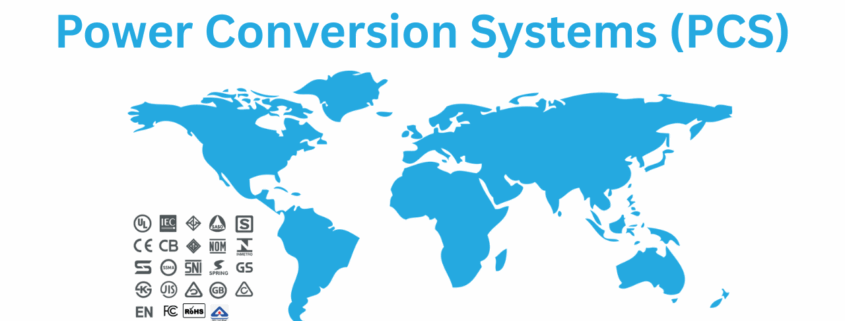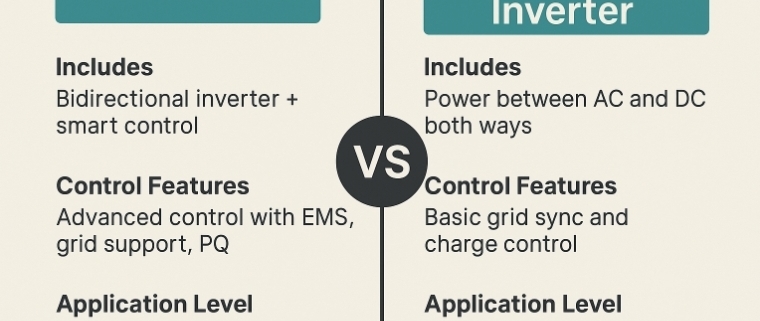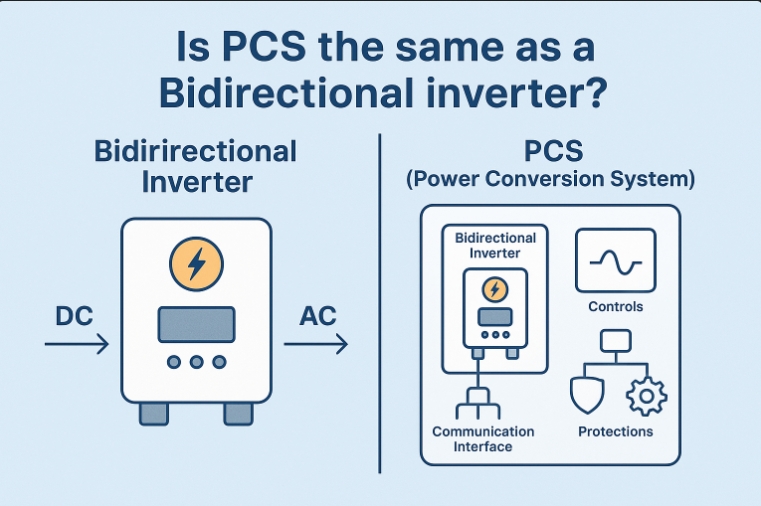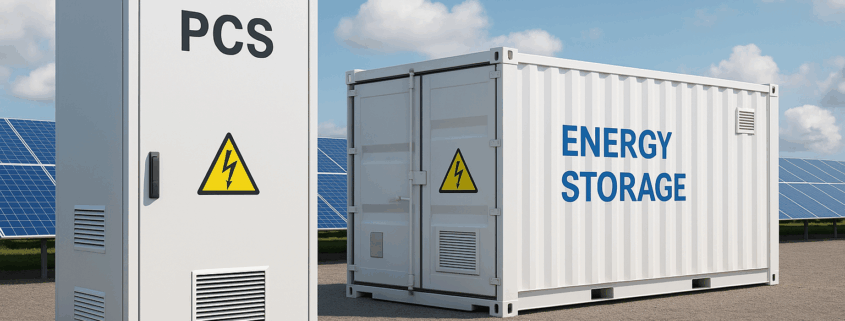Ever wondered what Energy Storage PCS actually does? In this post, we’ll break down how it works and where it’s used in real-world energy storage systems.
What is PCS in Energy Storage?
PCS stands for Power Conversion System. It is an essential device in energy storage systems that converts electricity between alternating current (AC) and direct current (DC). It allows batteries to store energy from the grid or renewable sources and then release it back as usable AC power when needed.
In short, PCS is the bridge between your batteries and the electrical grid—managing energy flow, ensuring safety, and improving overall efficiency.
What is Energy Storage PCS and Why It Matters?
Energy storage PCS (Power Conversion System) is the heart of any Battery Energy Storage System (BESS). It is responsible for managing the conversion between AC and DC power, enabling batteries to store energy and deliver it back to the grid when needed. Without a PCS, your energy storage solution is like a car without an engine.
The PCS helps to regulate the flow of electricity, balance energy loads, and ensure maximum efficiency and safety of your battery system. Whether for solar, wind, or hybrid power systems, energy storage PCS plays a vital role in stabilizing renewable energy.
How Energy Storage PCS Works
The PCS acts as a two-way converter. When the energy is generated by solar panels or wind turbines (AC power), the PCS converts it into DC to charge the batteries. When the energy is needed (like during peak hours), it converts the stored DC power back into AC to feed into the grid or power your home or facility.
In simpler terms:
- AC to DC conversion for charging the battery.
- DC to AC conversion for discharging to the grid or loads.
It also works with smart controllers and EMS (Energy Management Systems) to provide grid-support functions, frequency regulation, peak shaving, and energy arbitrage.
Types of Energy Storage PCS
There are several types of PCS based on the application and voltage level:
1. Low-Voltage PCS (LV PCS)
Used in small-scale or residential BESS. Operates below 1,000V.
2. Medium-Voltage PCS (MV PCS)
Used in commercial and industrial systems. Operates between 1,000V to 35kV.
3. High-Voltage PCS (HV PCS)
Used in utility-scale and grid-level projects. Supports large containers and centralized ESS plants.
4. Bi-directional PCS
This is the most advanced type. It can both charge and discharge efficiently, supporting dynamic grid functions.
Each type serves a unique purpose, and selecting the right PCS depends on your project size, energy goals, and budget.
Why PCS is Crucial in Battery Energy Storage Systems
Still wondering why energy storage PCS is important?
Here are a few key reasons:
Without a reliable PCS, your BESS will struggle to perform efficiently or safely.
Common Applications of Energy Storage PCS
PCS isn’t just for big power plants. You can find them in:
- Home and C&I energy storage systems
- Solar plus storage solutions
- Microgrids and off-grid systems
- EV charging stations
- Grid stabilization and frequency regulation projects
- Peak shaving and demand charge reduction
Whether you’re a homeowner trying to store solar energy or a utility trying to manage grid fluctuations, energy storage PCS is the backbone of your system.
Choosing the Right PCS for Your BESS
Here are a few questions to ask before choosing a PCS:
Q: What voltage and power level does my application need?
A: Match the PCS to your battery bank’s voltage and your energy load.
Q: Is it compatible with my battery chemistry (LFP, NMC, etc.)?
A: Yes. Always confirm with your supplier or integrator.
Q: Does it offer bidirectional operation?
A: For advanced systems, bidirectional PCS is a must.
Q: What kind of grid functions does it support?
A: Look for reactive power control, frequency response, black start, and islanding support.
Q: How efficient is the PCS?
A: A good PCS will offer 96%–98% round-trip efficiency.
Top Features to Look for in Energy Storage PCS
If you’re sourcing or integrating a PCS, here are some must-have features:
- Modular design for easy expansion
- IP54 or higher protection level for outdoor installations
- Liquid or forced air cooling for heat management
- LCD/Touchscreen display for monitoring
- Remote control and IoT connectivity
- CE, UL, IEC, and grid code certifications
Future Trends in Energy Storage PCS
The role of energy storage PCS is evolving with technology. Some exciting trends include:
These innovations make energy storage more accessible, efficient, and intelligent.
Conclusion: Energy Storage PCS Is the Unsung Hero of Clean Energy
In today’s energy transition journey, energy storage PCS is more important than ever. It acts as a bridge between renewable power and the grid, ensuring smooth, efficient, and safe operations. Whether you are building a small home system or a 100MW utility project, choosing the right PCS will make or break your success.
So, next time you think about a battery storage system, remember—your energy is only as smart as your PCS.





